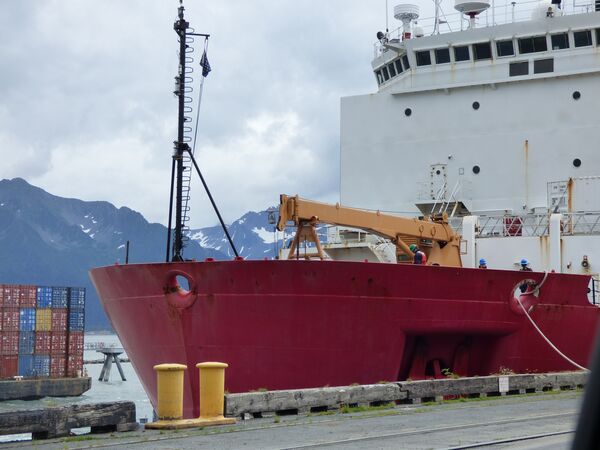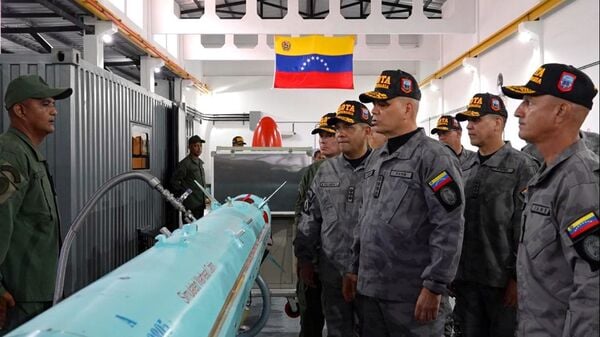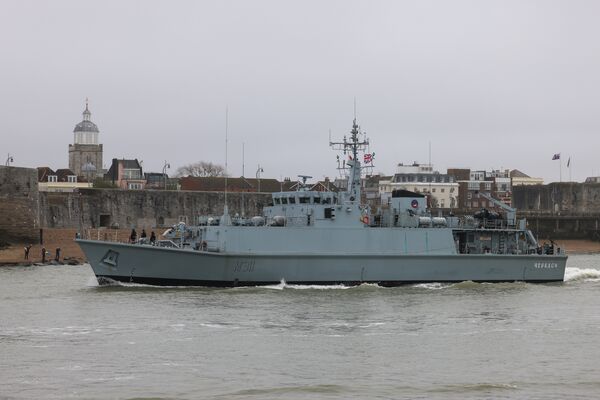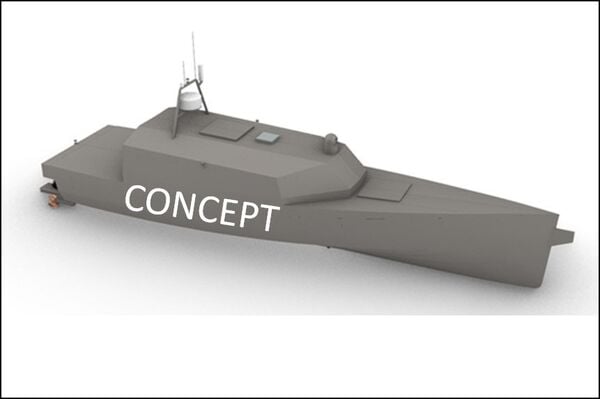- About
- Intara
- Capabilities
- Advisory
- Resources
- News
- Store
US Senator Murkowski cites need for faster icebreaker acquisition and improved Arctic communications
20 February 2023
by Michael Fabey


US Coast Guard icebreaker Healy calls in Seward, Alaska, in July 2022, while embarking on a North Pole deployment. US Senator Lisa Murkowski wants to accelerate the acquisition of additional icebreakers. (Michael Fabey)
Citing growing national security concerns in the Arctic, US Senator Lisa Murkowski of Alaska called for speedier acquisition of the proposed fleet of Polar Security Cutters (PSCs) and improvement of infrastructure for Arctic communications.
With their icebreaker capability, the PSCs will augment the icebreaking operations of the US Coast Guard (USCG), which generally deploys one icebreaker to the Arctic, cutter USCGC Healy (WAGB-20).
“One icebreaker does not a fleet make,” Murkowski said during the Polar Institute's public release of the United States Arctic Research Commission's (USARC's) Report on the Goals and Objectives for Arctic Research 2023–2024 on 15 February.
“We're still moving far too slow in my view with Polar Security Cutters,” Murkowski said. “We had a window where we thought we would have a chance to use a commercial icebreaker to bridge the gap – from where we are right now and until we see the actual Polar Security Cutter come on line.”
Venezuela displays Iranian anti-ship missiles
19 April 2024
by Jeremy Binnie


Venezuelan Defence Minister Vladímir Padrino López inspects a CM-90 anti-ship missile. (Ministerio del Poder Popular para la Defensa (Venezuela))
The Venezuelan military confirmed on 16 April that it has the CM-90 export version of Iran's Nasir anti-ship missile (ASM).
Defence Minister Vladímir Padrino López inaugurated what a defence ministry statement described as a workshop for the CM-90 at Base Naval CA Agustín Armario in Puerto Cabello as part of the Bolivarian Navy of Venezuela's (ABV's) anniversary celebrations on that day. It released photographs and a video of Padrino inspecting several ASMs and associated containerised testing equipment inside a building.
The Nasir was developed from the Nasr missile, which is Iran's version of the Chinese C704, with the solid-propellant motor replaced by a turbojet engine and a launch booster. Iranian export documentation says this makes the CM-90 88 cm longer than the CM-35, the export version of the Nasr, and increases its range from 35 to 90 km.
Ukrainian ex-Royal Navy minehunters to be temporarily based in Portsmouth
19 April 2024
by Kate Tringham


Cherkasy, one of the Ukrainian Navy's two newly acquired ex-Royal Navy Sandown-class MCMVs, is pictured entering Portsmouth Harbour on 11 April ahead of a series of multinational naval exercises. (Crown copyright)
The Ukrainian Navy's two newly acquired ex-Royal Navy (RN) Sandown-class mine-countermeasures vessels (MCMVs) have been temporarily homeported at Portsmouth Naval Base, the RN has confirmed.
The two minehunters, Chernihiv (ex-HMS Grimsby ) and Cherkasy (ex-HMS Shoreham ), arrived at Portsmouth Naval Base on 11 April ahead of a series of multinational exercises.
Previously based in Scotland, the ships will operate from Portsmouth “for the foreseeable future”, the RN said. While stationed in Portsmouth, they will engage in exercises with the RN and the US Navy (USN) in UK waters, helping the Ukrainian Navy to adapt to NATO operations.
Chernihiv and Cherkasy, which were recommissioned into Ukrainian Navy service in July 2023, were donated by the UK to Ukraine as part of the Ukraine Naval Capabilities Enhancement Programme (UNCEP). Ahead of their transfer from the RN, they were overhauled by Babcock at its facilities in Rosyth, Scotland.
Netherlands MoD and Dutch Naval Design team to collaborate on USV development
19 April 2024
by Kate Tringham


The USV concept. (Dutch MoD)
The Netherlands Ministry of Defence (MoD) and Dutch Naval Design (DND) have joined forces to develop an unmanned surface vessel (USV).
Announcing the partnership on 12 April, the MoD said the USV will be designed for deployment from the future anti-submarine warfare frigates (ASWFs) currently under development.
Under the terms of the contract, signed on 10 April, the USV is planned to be completed in around four years, the MoD said. The 12 m long vessel will be “technologically very advanced, sustainable, autonomous, and operationally flexible”, it added.
The Belgian and Dutch navies are procuring two ships each to replace their respective Karel Doorman (M)-class frigates under the ASWF programme. The ships are being designed and built by Damen under a contract awarded by the Dutch Materiel and IT Command (COMMIT) in June 2023. Under the terms of the contract, the first frigate will be delivered to COMMIT in 2028 and handed over to the Dutch navy in 2029, while the Belgian Navy will receive its first ship in 2030.
Citing growing national security concerns in the Arctic, US Senator Lisa Murkowski of Alaska called ...
Latest Podcasts
Iran Israel analysis
In this podcast Janes analysts discuss the Iranian attacks on Israel on the 14 April. They highlight the military systems used by Iran and the performance and impact of these on Israel. They also discuss the implications of this attack goi...
Listen nowJanes Case Studies
Using Janes Intara to build a common intelligence picture: Russian build up on the Ukrainian border
View Case StudyNews Categories
 Sea Details
Sea Details